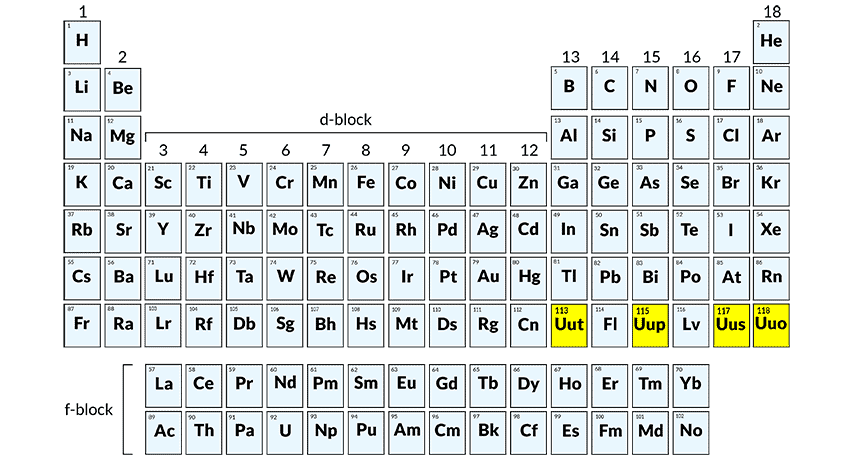The seventh row of the periodic table is now officially full – we just have to set a name for the newcomers.

The periodic table is the tabular arrangement of the chemical elements that revolutionized chemistry and enabled a systematic study of all chemical elements. The periodic table orders elements by the number of protons in the nucleus (the so-called atomic number), but also by electron configurations, and recurring chemical properties.
Officially, all elements from atomic numbers 1 (hydrogen) to 118 (ununoctium) have been discovered – with the last four just being recently confirmed. The first 94 elements have been discovered in nature, while all others have been synthesized artificially. Scientists have shown that elements 95 to 100 once occurred in nature but currently do not.
The last four elements
The new elements are called Ununtrium, Ununpentium, Ununseptium and Ununoctium – but these are just name holders representing their atomic number. They were basically created by mashing lighter nuclei into each other.
“The chemistry community is eager to see its most cherished table finally being completed down to the seventh row,” said Professor Jan Reedijk, president of the Inorganic Chemistry Division of IUPAC.
The new elements were synthesized by scientists in Japan, Russia and America, working at the Joint Institute for Nuclear Research in Dubna, Russia, and Lawrence Livermore National Laboratory in California. The discoverers will now be able to submit names which the IUPAC will approve.
“IUPAC has now initiated the process of formalising names and symbols for these elements temporarily named as ununtrium, (Uut or element 113), ununpentium (Uup, element 115), ununseptium (Uus, element 117), and ununoctium (Uuo, element 118).”


